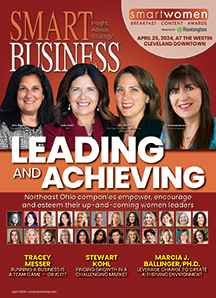Make it visible
While a project team transitioned daily operations, the bigger challenge was developing a new culture. After being with the same company for 25-plus years, there was pride and comfort in the Bayer name.
MacCleary says even the senior people wondered if they had the right skill set to lead Covestro into the future. He also received emails and texts from employees asking about the company’s volunteerism and STEM (science, technology, engineering and math) programs.
After various roundtables and town halls where MacCleary and his leadership team listened and learned, Covestro had its first kickoff with big events at all sites.
“About three, four weeks later, all of a sudden, they came back and said, ‘Well Jerry, where is all the excitement and where’s the change?’” he says.
With the same people and campus, it seemed like the same gray, old chemical company. So, MacCleary got with a few colleagues and someone came up with the idea of painting the walls with the new logo colors.
The employees loved it, and the idea spread to all buildings on the Pittsburgh campus and all plant sites.
In addition, MacCleary says they put up their own artwork to showcase the products, people and their families, redid company display cases and remodeled internally to make it brighter and more open.
“We started feeling the change and that’s when we started acting and doing the things that really live up to our new values and our culture,” he says.
Visual changes were the seeds to start impacting people’s attitudes and the culture, MacCleary says.
Advertising at the airport and a lighted lawn sign that people see driving by or flying over the Pittsburgh campus were additional physical changes that impacted the community.
“You can’t force it, you can’t force change,” he says. “You can’t force employees to like working there — you better walk the talk, you better live it.”
While it’s impossible to involve everybody, it’s important to give people a channel to have a voice. MacCleary says he and his team communicated the good and the bad, being as transparent as they could about changes to policies, compensation, benefits, etc.
That transparency — and MacCleary’s long tenure — helped build trust.
Employee ambassadors
Covestro also kept its corporate social responsibility. Not only did it send a strong message of its commitment to the employees and the region, it helped get the new brand out into the community.
Covestro sponsored rooms at the Energy Innovation Center and the Carnegie Science Center, while continuing support at Robert Morris University.
“Those are the kind of things — the three legs that we stood on to define who Covestro was,” MacCleary says. “So you saw the physical change, what we’re doing in the community, and what we stand for in science, research, energy efficiency and sustainability. You start bringing those pieces together and that’s all the actions we were taking to help build this culture.”
If the employees feel connected, valued and engaged, that will show, he says.
It’s an ongoing journey and the leadership team is still learning how to be flexible and empower the employees. MacCleary wants his employees to feel comfortable sharing ideas and asking questions without fear of consequences or judgment.
“An individual, a CEO, cannot do it by himself. They can help lead the charge, help break down barriers and help make sure the right change does happen, but ask your employees,” he says. “They can sure tell you what needs to be done. And if you listen, you make the right change, you’re going to be successful.”

